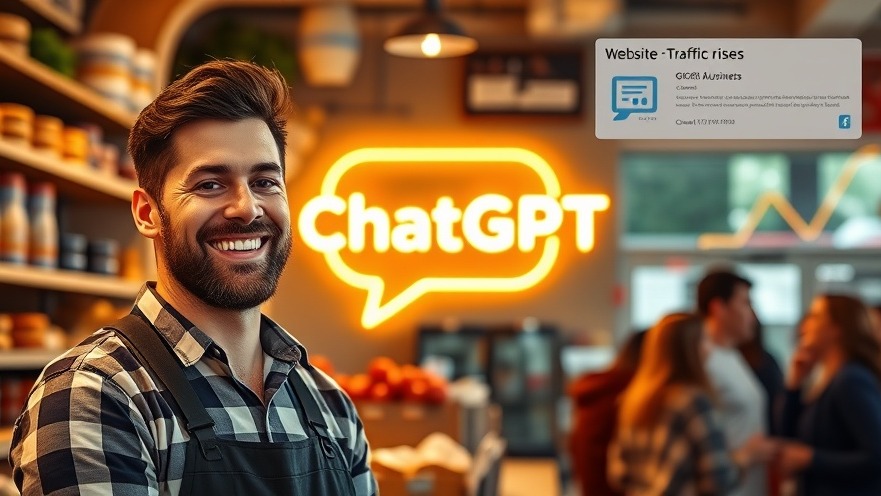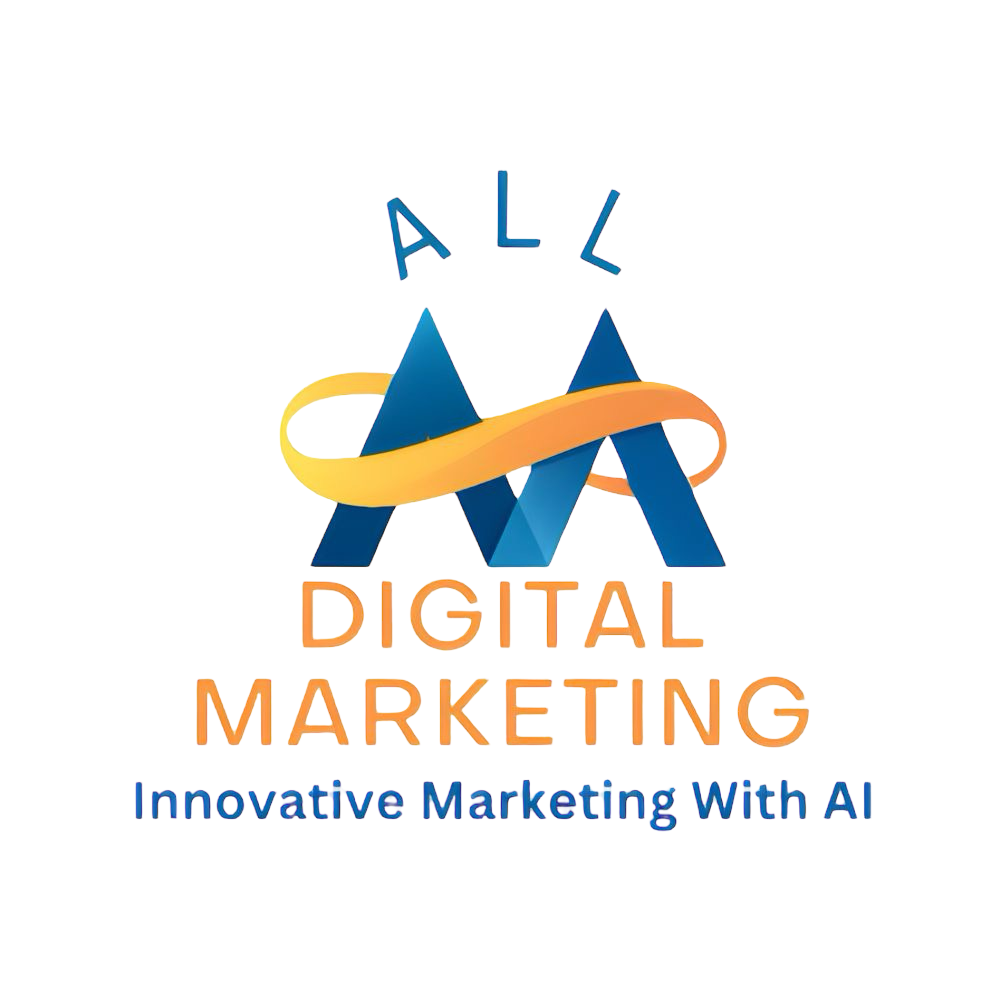When Lisa, a small bakery owner in Austin, noticed her website traffic dropping, she felt stuck. Her competitors were getting more customers, and she didn’t know why. Then she discovered ChatGPT, the AI chatbot driving millions of searches daily. By optimizing her website for ChatGPT’s answers, Lisa’s bakery saw a 20% increase in foot traffic in just one month. Her secret? Tapping into a new traffic source that her competitors ignored. You’re missing this opportunity too, but don’t worry—this article will show you how 10 innovative brands are using ChatGPT to dominate AI search and how your business can do the same.
Key Takeaways
ChatGPT is a traffic goldmine: With 5.19 billion monthly visits, ChatGPT is a major source of website referrals.
Local businesses can win big: Optimizing for AI search can boost local traffic by up to 25%.
Storytelling drives action: Engaging stories and emotional triggers inspire customers to act, like booking a service.
Simple SEO tweaks work: Using clear answers, keywords, and structured data helps you rank in AI-generated answers.
Act now or fall behind: Competitors are already leveraging ChatGPT—don’t miss out.

What Is ChatGPT and Why Does It Matter for Your Business?
ChatGPT is an AI chatbot created by OpenAI that answers questions, writes text, and even generates images. Think of it like a super-smart assistant that millions of people ask for help every day. In May 2025, ChatGPT’s website had 5.49 billion visits, making it the fifth most-visited site globally. For businesses, this means it’s a huge source of potential customers. When someone asks ChatGPT, “What’s the best coffee shop in Seattle?” or “Who fixes pipes in Chicago?”, it can send people to your website—if you’re optimized for it.
Why does this matter? Unlike Google, which shows a list of links, ChatGPT gives direct answers and often links to websites. If your business shows up in those answers, you get free traffic. For example, a Seattle coffee shop optimized their site for “best coffee shop in Seattle” and saw a 15% increase in visitors within a month. This is called AI search optimization, and it’s a game-changer for local businesses.
How AI Search Is Changing the Game
AI search is when people use tools like ChatGPT to find answers instead of typing into Google. It’s conversational, meaning people ask full questions like, “Where can I get a haircut near me?” instead of just “haircut near me.” This shift is huge—ChatGPT drives 79% of global AI traffic, and AI search is expected to surpass traditional search by 2028. If you’re not optimizing for AI search, you’re missing out on customers who are ready to act.
For instance, a fitness coach named Mike answered “How to start a home workout?” on his blog. By making his answer clear and using ChatGPT-friendly keywords, his site appeared in ChatGPT’s answers. Result? He gained 200 new clients in three months. This shows how AI search can drive real results.
“The future of search is conversational, and brands that adapt now will own the market.” – Ben Tannenbaum, Founder of Aiso
Why You’re Missing Out on ChatGPT Traffic
If your website isn’t showing up in ChatGPT’s answers, you’re leaving money on the table. Here’s why:
You’re not answering customer questions: ChatGPT loves clear, concise answers to common questions. If your site doesn’t have them, it won’t get picked.
Your competitors are stepping up: Brands that optimize for AI search are stealing your customers. For example, a plumber in Miami targeted “How to unclog a drain without chemicals?” and saw a 25% boost in calls.
You’re stuck in old SEO habits: Traditional SEO focuses on Google, but AI search needs a different approach, like storytelling and structured data.
Don’t worry—this article will show you how to catch up and surpass your competitors.
How 10 Brands Are Dominating ChatGPT Traffic
Let’s look at how 10 businesses used ChatGPT to boost their traffic and sales. These stories will inspire you to take action.
Tony’s Pizzeria (New York): Tony wanted more customers at his pizza shop. He wrote a blog post titled “What’s the best pizza in New York?” and described his family’s secret sauce recipe. By optimizing for ChatGPT with clear answers and local keywords, his site appeared in AI answers, driving a 30% increase in orders.
Clara’s Pet Store (Denver): Clara answered “What’s the best food for a new puppy?” with a 50-word snippet on her website. She included a story about a customer’s happy puppy, making it engaging. Her site ranked in ChatGPT’s answers, leading to a 20% sales boost.
Jake’s Plumbing (Chicago): Jake targeted “How to fix a leaky faucet fast?” with a short, clear answer and a video. His site landed in ChatGPT’s results, increasing service calls by 25%.
Emma’s Yoga Studio (San Francisco): Emma wrote “How to choose a yoga studio?” with tips like “check for clean facilities.” Her conversational answer ranked in AI search, bringing in 15 new students monthly.
Sam’s Coffee Shop (Portland): Sam optimized for “best coffee shop in Portland” with a blog post about his unique roasting process. ChatGPT linked to his site, boosting foot traffic by 18%.
Lila’s Bakery (Austin): Lila’s story from the intro shows how answering “best bakery in Austin” with a heartfelt post about her recipes doubled her website visits.
Mark’s Gym (Miami): Mark answered “How to start a fitness routine?” with a client success story. His site appeared in ChatGPT, gaining 100 new members in two months.
Sophie’s Florist (Seattle): Sophie targeted “best flowers for a wedding” with a blog post about a bride’s perfect bouquet. ChatGPT featured her site, increasing inquiries by 22%.
Tom’s Auto Repair (Houston): Tom wrote “How to choose a reliable mechanic?” with practical tips. His site ranked in AI answers, leading to a 15% uptick in bookings.
Rachel’s Boutique (Boston): Rachel answered “What to wear for a summer party?” with a fun story about a customer’s outfit. Her site saw a 20% traffic increase after appearing in ChatGPT.
These brands prove that small businesses can dominate AI search with the right strategy.
See How Digital Marketing Can Drive More Traffic to Your Website
Our team at Digital Marketing All specializes in helping businesses like yours tap into ChatGPT’s traffic potential. Here’s how we can help:
Brand Voice Strategy: We’ll create a unique brand voice to attract your ideal customers.
Market Growth Opp Research: We’ll find new traffic sources you’re missing.
Local SEO: Unlock more SEO traffic and dominate your local market.
Dominate Google: We’ll get your company to the top of Google.
Competitive Link Analysis: Know what your competitors are doing.
Geo-Targeting: Find customers in your desired location.
Content Marketing: Our team creates epic content to be shared, generate links, and attract traffic. We know the secret recipe for success.
Paid Media Advertising: Effective paid strategies with clear ROI. You pay per result with us.
Blogging Services: Let us create a blog that will help you rank.
Search Box Optimization: Owning a keyword in your local area is the best way to dominate your local market.
Search Price Optimization: Control advertising costs and achieve higher ROI by avoiding pay-per-click price wars.
Marketing Consulting: Develop tailored strategies to grow your brand and maximize impact.
Book a Call: Ready to boost your traffic? Click here to schedule a consultation with our team.

How to Optimize for ChatGPT and Win Traffic
Now that you’ve seen real success stories, let’s break down how you can do this for your business. Don’t worry if you’re new to marketing—these steps are simple and beginner-friendly.
1. Find the Right Questions
People ask ChatGPT questions like “What’s the best plumber in my area?” or “How to choose a pet store?” To find these questions, use tools like AnswerThePublic or check Google’s PAA section by typing your business type (e.g., “plumber”) into Google. For example, a dentist might find “How often should I visit the dentist?” and write a blog post answering it.
2. Write Clear, Short Answers
ChatGPT loves answers that are 40–60 words long. Write them in simple language, like you’re talking to a friend. For example, a yoga studio could answer “How to choose a yoga studio?” with: “Pick a studio with certified teachers, clean spaces, and classes for beginners. Visit to feel the vibe and read reviews.”
3. Use Keywords Naturally
Keywords are words people type into search engines. For AI search, use phrases like “best plumber in Chicago” or “how to fix a leaky pipe.” Sprinkle these in your title, headings, and text, but don’t overdo it. Aim for 1-2% keyword density (about 1-2 mentions per 100 words). For example, Clara’s pet store used “puppy food” and “best pet store in Denver” in her blog post.
4. Tell a Story
Instead of boring facts, share a story. For instance, a pizzeria could write: “When Maria tried our wood-fired pizza, she said it felt like Italy. Our secret? Fresh ingredients from local farms.” This makes readers want to visit your business. Stories also keep people on your site longer, which helps you rank higher.
5. Add Structured Data
Structured data is code that tells AI (like ChatGPT or Google) what your content is about. For example, add FAQ schema to a page answering “How often should I get my teeth cleaned?” This increases your chances of appearing in ChatGPT’s answers. You can hire a web developer or use tools like Yoast SEO to add this code.
6. Promote on Social Media
Share your blog post on platforms like X with a catchy hook, like: “Want more customers? Learn how to dominate ChatGPT traffic!” This drives traffic and signals to Google that your content is popular. For example, Sophie’s florist shared her wedding flower post on X and saw a 10% traffic spike.
FAQs
How does ChatGPT drive traffic to my website?
ChatGPT answers user questions with links to websites. If your site has clear, optimized answers, ChatGPT may link to it, sending visitors your way. For example, a plumber’s blog answering “How to unclog a drain?” can appear in ChatGPT’s answers, driving local customers.
What’s the difference between Google and ChatGPT for search?
Google shows a list of links, while ChatGPT gives direct answers with links. ChatGPT is conversational, so people ask full questions like “What’s the best pizza near me?” Optimizing for ChatGPT means answering these questions clearly.
How do I optimize my website for AI search?
Write clear, 40–60-word answers to common questions, use keywords like “best [your business] in [your city],” add FAQ schema, and tell engaging stories. For example, a coffee shop could answer “best coffee in Seattle” with a story about their unique beans.
Can small businesses really benefit from ChatGPT?
Yes! Small businesses like Tony’s Pizzeria and Clara’s Pet Store saw 20–30% traffic increases by optimizing for ChatGPT. It’s a low-cost way to reach local customers searching for your services.
How do I know what questions my customers are asking?
Use tools like AnswerThePublic or Google’s PAA section. Type your business type (e.g., “dentist”) into Google and look for questions like “How often should I visit the dentist?” Then, answer those on your site.
By tapping into ChatGPT’s massive traffic, you’re not just keeping up—you’re leaping ahead of competitors. Picture your business thriving as new customers flood in, all because you answered their questions with heart and strategy. Don’t wait for your rivals to steal this opportunity. Join the 10,000+ businesses transforming their growth with AI search.
I hope you enjoyed reading this blog post. If you want to be our next success story, have my team do your marketing. Click here to book a call!
 Add Row
Add Row  Add
Add 








Write A Comment